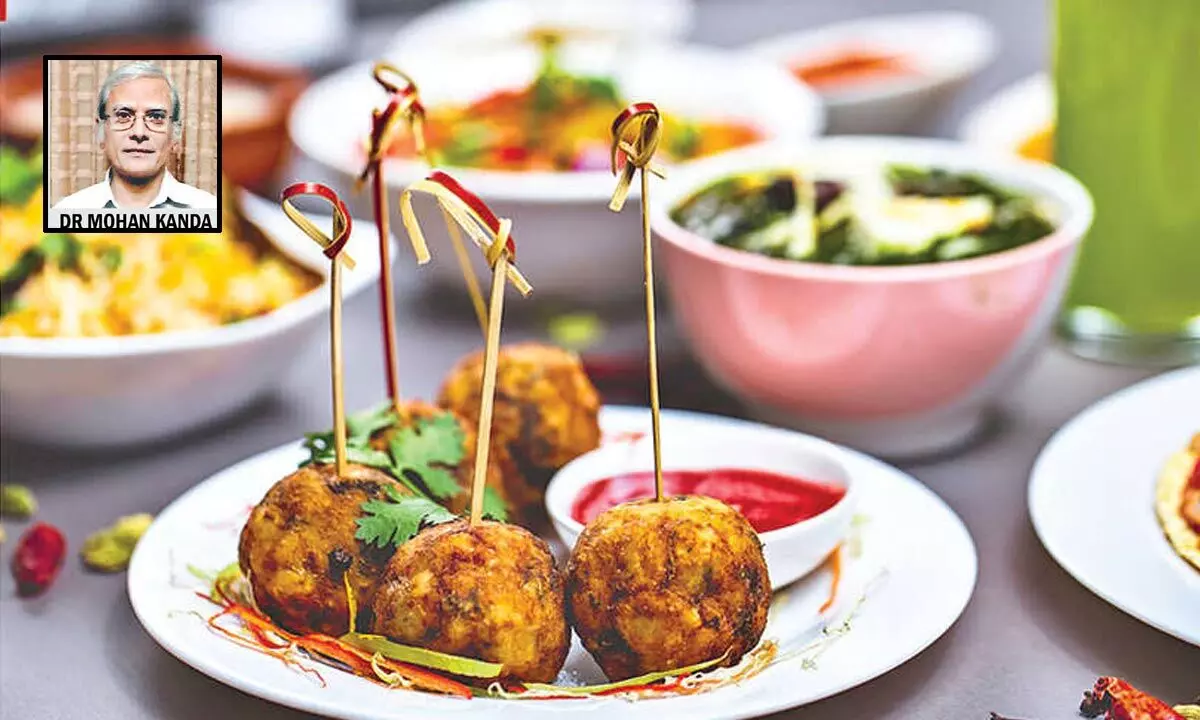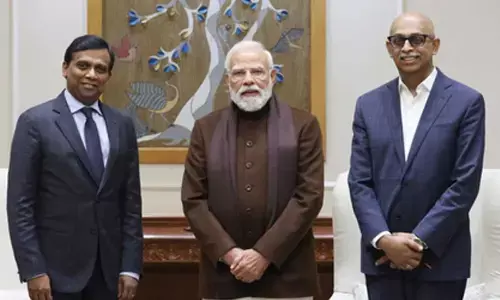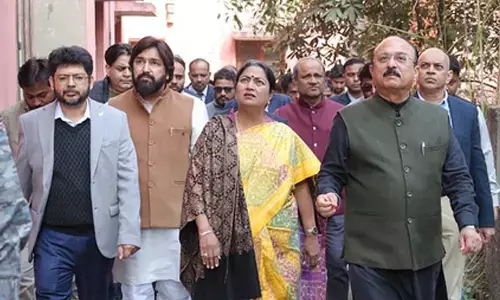Global Eating Habits - From Tradition to Temptation

Global Eating Habits - From Tradition to Temptation
Discover how food traditions across the globe impact health and enjoyment, from Japan to India, along with the importance of presentation, sharing, and community meals.
A sit down meal is preferable to a buffet, as a comfortable posture adds to the enjoyment of a meal and one does not have to wait for an order to be filled, as in a restaurant; wastage, however, is unavoidable on account of a mismatch between demand and supply. Consequently, even the most reputed hotels are constrained to resort to the very undesirable practice of reusing leftovers.
Let us now look at the eating habits of some important nations, and how they impact on the conflicting imperatives, of enjoyment and good health. One can hardly find a better example to begin with than Japan, where the diet is almost free from refined sugars, low in dairy and fruit, and comprising mostly rice, vegetables, fish, and meat. Little wonder, then, that Okinawans, who inhabit a prefecture in the East China Sea, between Taiwan and mainland Japan, live longer than any other people on earth.
China comes next with essentially vegetarian food, comprising plant foods, fish, poultry, or red meat and laced with disease-fighting antioxidants. Unsurprisingly, many regions in the country have yet to hear of breast cancer or heart disease.
Germany follows closely, with its delicious salads, soup, vegetables, and cheese constituting the usual meal.
India, unfortunately, fares badly, the average diet being quite unhealthy, especially among the well-to-do. People meet calorific requirement largely with whole grain. Protein-based food, vegetables and fruits remain neglected. Consumption of animal protein is low. Vegetables are cooked in oil or butter. Rice, or roti, is consumed excessively. Sweets and fried items make the situation worse. And the general aversion to exercise makes for a potentially dangerous situation.
The cuisines of the upper and the lower middle classes, however, is among the most diverse, healthy and flavourful in the world, designed to improve overall health and well-being. Pulses, legumes and vegetables which pack nutrients, vitamins and minerals, figure prominently in the menus, as does ghee which, used in moderation, has many beneficial effects.
Presentation is as important for a meal, as its taste and nutritive value are. Thus, in festive and religious occasions, meals are presented in an appealing fashion, which is pleasing to the eye. There was, for example, the dinner at the reception at my son Arvind’s wedding. The arrangement of the items on the traditional banana leaf was in itself a glorious riot of colour and acted like a delectable appetiser.
People in the countries of Southeast Asia and Far East, are very fond of seafood and extremely cosmopolitan in their preferences for non-vegetarian food, which includes even the meats of dogs or snakes. In fact, in glass boxes outside restaurants in Bangkok, various types of sea creatures are showcased, with a sign proudly proclaiming, “If it moves, we eat it!”
I have been blessed with many friends. One of the best among them was Bhujanga Rao (Bujji to family and close friends), from my days at the Osmania University. Over time, we became thick as thieves, practically inseparable. Our unforgettable five decades and more, we shared many things, good, bad, and indifferent. We spent many memorable evenings, driving around on the roads of Hyderabad, drinking beer, often ending with a meal that comprised the most delicious ‘chole bhature’, ‘Havmor’ restaurant. The bread was hot and crisp, and the chickpeas soaked in a tasty ‘masala’, and vinegar soaked onions, pieces of pickle and fresh green chilies were thrown in. Going back home, we would hum ‘Meri Bheegi Bheegi Si Palko Pe Reh Gaye’, a popular song by Kishore Kumar in the movie ‘Anamika’.
Among the tastiest vegetarian meals I have ever had were the ones served by a chap called Iyer, in the meals section of the Padmavati Guest House at Tirupati, during our frequent pilgrimages to the temple town of Tirumala for a Darsanam of Lord Venkateswara. More than the taste of the meals, which included the delicious ‘Avial’ and ‘Kootu’, was the affection and attention with which they were served, while Iyer regaled us with stories of past guests as we ate!
Very much worth mentioning, in this contact, is the highly appreciable practice of offering food free, which is common at many religious institutions. At Tirumala, where the temple of Lord Venkateswara is located, ‘Annadanam’, or offering free food to all, has been happening for a long time now. Likewise, Gurdwaras, the places of worship of Sikhs, have what are called ‘Langars’ or community kitchens, which serve meals free of charge to all visitors, without making a distinction of religion, caste, gender, economic status or ethnicity. Many mosque serve free meals to congregants, and others in need, especially during the Ramadan period.
That all people are equal in the eyes of God was amply demonstrated by E S L Narasimhan, formerly the Governor of Andhra Pradesh, and his wife, during their frequent pilgrimages to Tirumala. Wearing the traditional South Indian ‘Veshti’ or loin cloth, and silk saree, they would serve pilgrims at the Annadanam Centre.
Citizens of the twin cities of Hyderabad and Secunderabad are justly proud of their cities for various reasons. That there is a strong presence of people from all parts of the country, from Gujarat and Maharashtra, through Goa, Karnataka, Tamil Nadu, Orissa, West Bengal, Northeast, Kashmir, Punjab, and Rajasthan is one reason. That presence also makes for the Hyderabadi Urdu being a little like the South Indian ‘Avial’, a rich and heady mixture of idiom, accent, grammar, and turn of phrase, from nearly all the languages of India. Another attraction of the cities is the amazingly versatile cuisine they offer. Among the various other delicacies, the Hyderabadi Biriyani is most well-known. While the Biriyanis made in Madina Hotel in the Old City, the Government House Department (GHD), or ‘Ameera’, of the state government, and the Paradise Restaurant in Secunderabad, are close competitors for the numero uno position, I regard the GHD variety as the best.
No matter how adequate, and tasty, meals and snacks made at home are, people find it difficult to resist the temptation to taste snacks outside. My daughter Aparna was in her 4th standard in the Air Force Bal Bharathi School in Delhi, where I was working as Secretary to Vice President of India. I recall with amusement her asking me once whether she could eat a bread pakoda in the school. When I said, “of course”, she asked me, with wide-eyed innocence, “But can you afford it?” She must have heard my wife, and me, discussing our financial problems the previous night!
(The writer was formerly Chief Secretary, Government of Andhra Pradesh)

















